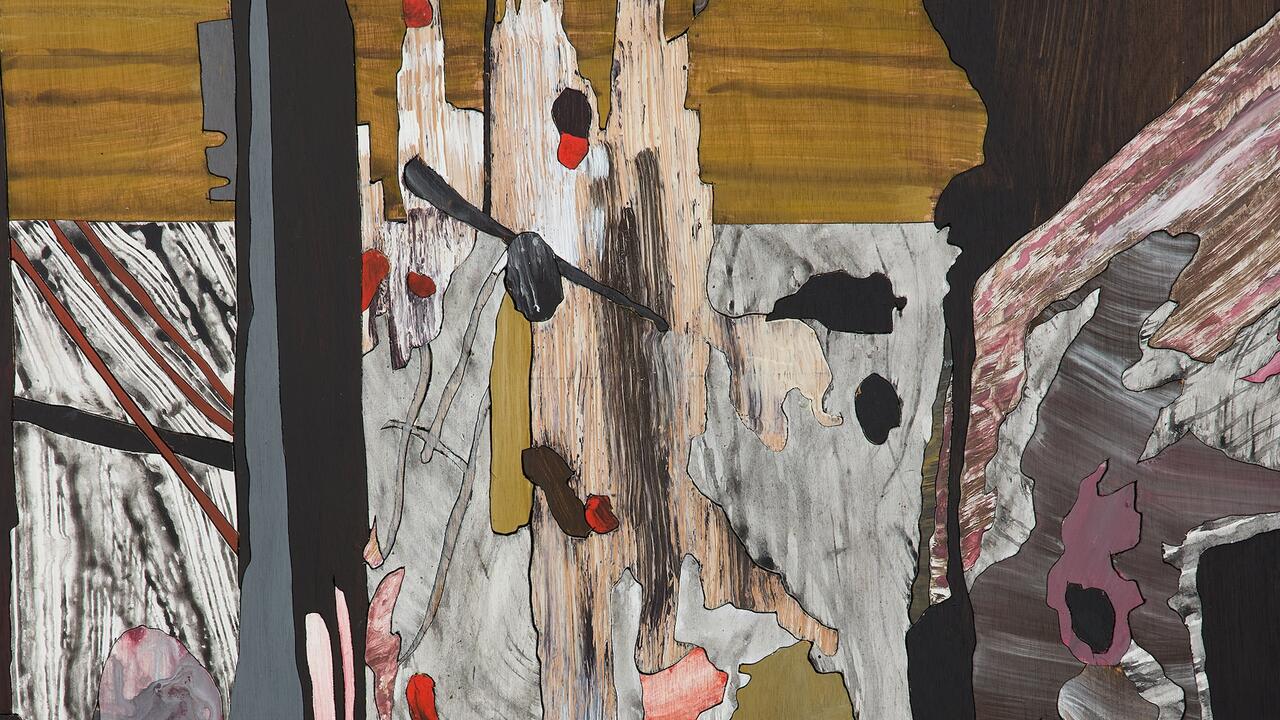Jess Flood-Paddock
Swallow street, London, UK
Swallow street, London, UK

Jess Flood-Paddock’s ‘Sacrifice’, the final exhibition in a sparky, intriguing series of six shows organized by Sarah McCrory at the temporary Swallow Street space, at first glance recalled the kind of unforgivable curatorial butchery last practiced when museums functioned as the trophy cabinets of Empire. What appeared to be a large stone statue of the Aztec goddess Coatlicue – snake-headed ‘mother of the earth’ – had been sawn horizontally in two at the waist, the better to pass through the gallery’s modest front door and to fit beneath its low-slung ceiling. This, though, was no graven idol, but rather a blocky, wooden approximation of an artefact in the collection of the National Museum of Anthropology in Mexico City, pasted with out-of-focus black and white photographic images of the original’s carved claws, necklace of skulls and drooping, pendulous breasts, and treated here and there with passages of grey paint. The bottom half was set on a pedestal, its jagged top skimming the gallery’s lighting tracks and its base surrounded by sand, as though it were a prop in a budget remake of Raiders of the Lost Ark (1981). The top half sat on the marbled gallery floor, a series of marble slabs cut from the same block and arranged so that they resembled Rorschach blots, inadvertently echoing the statue’s mirrored forms.
The title of Flood-Paddock’s exhibition (and the eponymous sculpture) stirred up images of bloody offerings to uncompromising pre-Columbian deities, but it also hinted at something forfeited in the pursuit of displaying this particular object in this particular place. The comic flight of fancy this encouraged was that both artist and curator were so maniacally determined to show this work at Swallow Street that they agreed to cleave it in two, sculptural and professional integrity be damned. While this was, of course, not the case (and it is by no means certain that Flood-Paddock’s goddess was fabricated as a single piece), it served to focus the viewer on the show’s presiding concern: what is compromised when art enters the public sphere? In even medium-sized institutions, we encounter not only art but also a set of security provisions and interpretative gambits: the voices of minor celebrities leaking from fellow gallery-goers’ audio-guides; velvet ropes slung across paintings as though they were the VIP areas of provincial nightclubs. (Commercial galleries offer arguably even less by way of a ‘pure’ experience of art, but find it easier to keep visual distractions at bay.) Display is nearly always a deal with practicality and politics, and ‘Sacrifice’ addressed this with considerable humour and sculptural aplomb. As a not-for-profit, non-government-funded space supported by Hauser & Wirth, Swallow Street allowed the artists who exhibited there an uncommon freedom. By choosing to dramatize and square up to the basic (and pretty much unassailable) compromises forced by the height of its ceiling and size of its door, Flood-Paddock sacrificed not her bisected idol (no numinous essence escaped its truncated torso), but rather the fantasy that any work of art might exist solely on its own terms.























